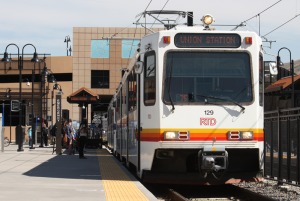Back in college I saved up $500 in beer money, a considerable feat at any age, and bought a very-sexy, very-used Datsun 210. This two-door tin roadster had a cracked windshield to match its faded red paint and rust spots, leaked water into the cabin every time it rained and could go zero to sixty in under 15 minutes.
And it was a machine of great beauty.
With it I was able to get to my job, start my small business and go where I needed to go when I needed to be there. I controlled my own destiny because of this little freedom machine. Sure, others had a $50,000 BMW, but with my little clunker no road that was open to them was closed to me. There was no place they could go that I could not follow. I was their equal.
It was then I really started to take notice of people waiting on the side of the road for a government-owned bus, on a government-made schedule, to take them to where the government thought they should go. As I flew past these people in my little $500 tin can, it really hit me; these people could be forever stuck on the bottom rung of the economic ladder. They were not my equal and may never be. They had lesser lives because they had lesser ability to get to where opportunity was.
To be clear, I’m not talking about the people who choose to leave their car in their garage, so they can ride RTD to a Rockies game and avoid paying for parking. The Regional Transportation District’s park-n-Rides are monuments to those whose lives are overflowing with mobility choices.
What I am talking about, are people who are solely dependent on public transit, people too poor or too infirmed to drive.
When governments around the country started getting into the transit business in the 1960s, the Great Society purpose was to provide transportation to those who had no other options, not to give even more to those who already had enough.
Today, RTD’s lavish subsidies are mostly spent on people who have all the mobility choices in the world with their own cars, taxis and Uber. And the poor who have no car or money for taxis, overwhelmingly minorities who need more inner-city travel, are relegated to a public-transit-only purgatory. They will always be second-class citizens watching opportunity and the American dream soar past them as they wait by the side of the road for Soviet-style transport to come — waiting and waiting and transferring from bus to bus to get to work, school and stores.
Modern government-run transit has stolen their hope of a better, self-directed life so that middle-class, mostly-white people can avoid paying anything close to full fare when they ride public transit.
No RTD route makes money; they all lose money on a massive scale.
![]() RTD, where I used to be chairman, is a regional government yet rakes in nearly twice as much in total appropriations as the entire Colorado Department of Transportation (i.e. Roads), but it only carries about a paltry 2 percent of the commutes in the Denver metro area. RTD is now going through its required bureaucratic maneuvers to raise its fares. Farebox revenue is supposed to cover about 30 percent of operating costs, but when you add in all the capital costs of buses, trolley systems and rail, fares cover only a tiny sliver of what RTD spends.
RTD, where I used to be chairman, is a regional government yet rakes in nearly twice as much in total appropriations as the entire Colorado Department of Transportation (i.e. Roads), but it only carries about a paltry 2 percent of the commutes in the Denver metro area. RTD is now going through its required bureaucratic maneuvers to raise its fares. Farebox revenue is supposed to cover about 30 percent of operating costs, but when you add in all the capital costs of buses, trolley systems and rail, fares cover only a tiny sliver of what RTD spends.
Poor people who spend a greater percentage of their income on sales tax, where RTD gets most of its cash, are paying for middle-class white guys with cars to get ridiculously subsidized rides.
This is the institutional bigotry of Denver’s Jim Crow public transit.
There is a solution if we are ever brave enough to recognize the problem.
The massive tax that RTD already rakes in should be retargeted only to those without mobility choice. Let RTD charge full-fare on all its routes for rich and poor alike, even though the sticker shock would cause panic attacks. Subsidies could then be directed only to those who are truly transit-dependent, means tested for the poor and certified for the disabled, in the form a direct payment like a mobility smart card.
Let the poor have the same transportation choices you have! Let them use their direct payment to pay full fare on RTD, or on a taxi, or on Uber. Or heaven forbid they become your mobility equal and use their subsidy to buy a $500 used car.
Jon Caldara is president of the Independence Institute, a free market think tank in Denver.


